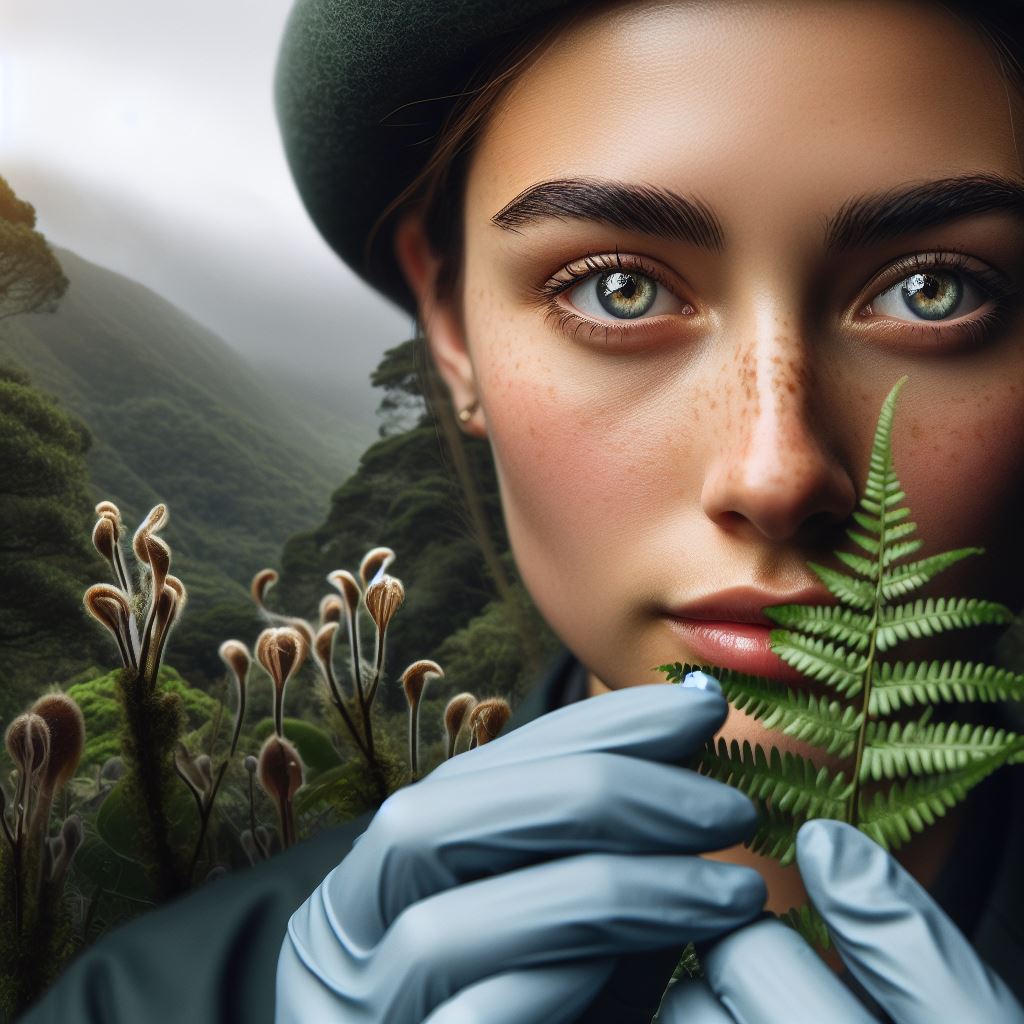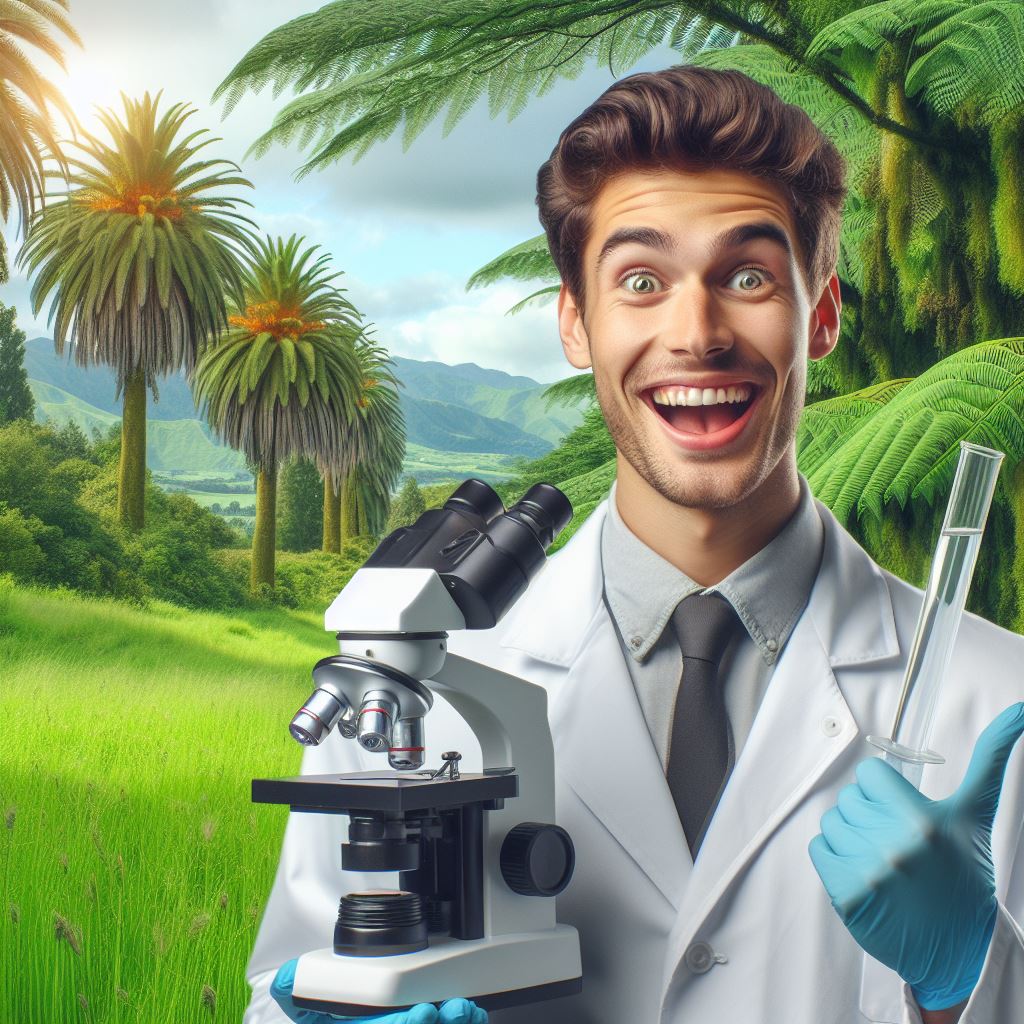Introduction
Conservation biology is the study of the protection and management of biodiversity.
It plays a crucial role in preserving the unique flora and fauna of New Zealand.
Conservation biology in New Zealand focuses on:
- Preserving Endemic Species: New Zealand is home to many unique species found nowhere else on Earth. Conservation efforts aim to protect these species from extinction.
- Restoring Ecosystems: Conservation biologists work to restore ecosystems that have been damaged by human activity, such as deforestation and invasive species.
- Managing Threats: Conservation biology involves identifying and managing threats to biodiversity, such as habitat loss, pollution, and climate change.
- Promoting Sustainability: Conservation biology promotes sustainable practices to ensure that future generations can also enjoy New Zealand’s natural beauty and biodiversity.
Conservation biology is crucial in New Zealand due to its unique biodiversity and the threats it faces.
It plays a vital role in protecting the environment, ensuring the survival of endangered species, and promoting sustainable practices.
Role of Conservation Biologists in Ecosystem Management
A. Research and Monitoring
Conservation biologists play a crucial role in conducting research and monitoring efforts to understand ecosystems.
They collect data on biodiversity, population sizes, and distribution of species to evaluate ecosystem health.
Through their research, they identify key threats to species and ecosystems, helping inform conservation strategies.
Conservation biologists also monitor the effectiveness of conservation actions to ensure their long-term success.
B. Identification and Assessment of Threatened Species
Another important role of conservation biologists is to identify and assess threatened species.
They study their habitat requirements, population dynamics, and factors contributing to their decline.
Conservation biologists determine the status of species using scientific methods to prioritize conservation efforts.
By understanding the threats faced by these species, they can develop targeted conservation plans for their protection.
C. Designing Conservation Plans and Strategies
Conservation biologists are involved in designing comprehensive conservation plans and strategies.
They utilize their knowledge of ecosystems and species to develop effective and sustainable conservation solutions.
Personalized Career Consulting
Unlock your potential with expert career advice tailored to your goals. Get personalized guidance and actionable steps toward your dream career in New Zealand.
Get StartedThey collaborate with stakeholders to identify conservation goals and implement appropriate management actions.
Conservation plans include strategies for habitat protection, species recovery, and long-term ecosystem management.
D. Habitat Restoration and Protection
Habitat restoration is a critical aspect of conservation biology, and conservation biologists are at the forefront.
They identify degraded habitats and work to restore them, promoting biodiversity and ecosystem resilience.
Conservation biologists also advocate for the protection of crucial habitats through policy development and advocacy.
By restoring and protecting habitats, they provide a secure environment for endangered species to recover.
E. Collaboration with Local Communities and Stakeholders
Conservation biologists recognize the importance of collaboration with local communities and stakeholders.
They engage with indigenous peoples, landowners, and resource users to incorporate local knowledge and values.
By involving stakeholders, conservation biologists ensure that their conservation plans are inclusive and sustainable.
Community involvement fosters a sense of ownership and enhances the long-term success of conservation efforts.
In fact, conservation biologists play diverse and crucial roles in ecosystem management.
Through their research and monitoring efforts, they provide essential data to understand and conserve ecosystems.
They identify and assess threatened species, design conservation plans, and restore habitats to promote biodiversity.
Furthermore, their collaboration with communities and stakeholders ensures sustainable conservation practices.
Transform Your Career with a Professional CV and Cover Letter
Stand out to employers with an ATS-optimized resume and tailored cover letter designed to match your dream role. Let us craft your job application materials for success!
Get StartedConservation biologists contribute significantly to the protection and management of ecosystems in New Zealand.
Read: Molecular Biology Careers in New Zealand
Role of Conservation Biologists in Wildlife Conservation
A. Studying and Monitoring Wildlife Populations
Conservation biologists play a crucial role in studying and monitoring wildlife populations to assess their health, abundance, and distribution.
They conduct field surveys, collect data on species diversity, and monitor population trends through techniques like camera trapping.
Using this information, they can identify threats to wildlife populations and develop effective conservation strategies.
B. Implementing Conservation Measures for Endangered Species
Conservation biologists work towards conserving endangered species by implementing various measures.
They conduct research on the species’ biology and habitat requirements and develop plans to protect critical habitats.
They collaborate with local communities and governments to implement laws and regulations for the conservation of endangered species.
C. Wildlife Rehabilitation and Captive Breeding Programs
Conservation biologists are involved in wildlife rehabilitation and captive breeding programs to save species from extinction.
They rescue and rehabilitate injured or orphaned animals, provide veterinary care, and release them back into the wild.
In cases where species are on the brink of extinction, conservation biologists establish captive breeding programs to boost their populations.
D. Managing Invasive Species
Conservation biologists play a crucial role in managing invasive species that pose a threat to native biodiversity.
They conduct research to understand the ecological impacts of invasive species and develop strategies to control or eradicate them.
By implementing measures to prevent their introduction and spread, they protect native species and ecosystems.
Boost Your Career with a Standout LinkedIn Profile
Attract recruiters and expand your network with a fully optimized LinkedIn profile tailored to highlight your strengths and professional goals. Let your profile open doors to new opportunities!
Get OptimizedE. Wildlife Conservation Education and Outreach
Conservation biologists contribute significantly to wildlife conservation education and outreach efforts.
They raise awareness about the importance of biodiversity, endangered species, and conservation issues among the general public.
They collaborate with schools, organizations, and communities to organize workshops, campaigns, and events to educate people about wildlife conservation.
By engaging and empowering people, conservation biologists promote a sense of responsibility towards the environment.
Overall, conservation biologists have diverse roles in wildlife conservation, ranging from studying and monitoring populations to implementing conservation measures and educating the public.
Their efforts are essential in preserving biodiversity, protecting endangered species, and ensuring the sustainable management of natural resources.
Read: Field Biology in NZ: What’s It Really Like?

Role of Conservation Biologists in Marine Conservation
A. Studying and Monitoring Marine Ecosystems
Conservation biologists play a crucial role in studying and monitoring marine ecosystems to understand their functioning and identify areas of concern.
They conduct extensive research to assess the health of marine environments and determine the factors affecting their biodiversity.
Through their active involvement, they gather data on species abundance, distribution patterns, and ecosystem dynamics, providing valuable insights for conservation efforts.
B. Protecting and Restoring Marine Biodiversity
Conservation biologists actively work towards protecting and restoring marine biodiversity by developing and implementing conservation plans.
They identify endangered species, design habitat restoration projects, and establish protected marine areas to safeguard vulnerable ecosystems.
Their efforts focus on preserving key habitats such as coral reefs, seagrass beds, and mangroves, which support a high diversity of marine life.
C. Managing Fisheries and Sustainable Harvesting
Conservation biologists also contribute to the management of fisheries and promote sustainable harvesting practices.
They collaborate with fisheries managers, policymakers, and local communities to develop strategies that ensure the long-term viability of marine resources.
By conducting research on fish populations, assessing the impacts of fishing methods, and promoting sustainable techniques, they help maintain healthy fish populations and safeguard marine food webs.
D. Conservation of Marine Protected Areas
Conservation biologists play a crucial role in the establishment and management of marine protected areas (MPAs).
They contribute to the design and implementation of MPA networks to conserve critical habitats and protect vulnerable species.
These protected areas serve as sanctuaries where marine life can thrive, promoting biodiversity conservation and ecosystem resilience.
Conservation biologists work towards monitoring and enforcing regulations within MPAs to ensure their effectiveness in preserving marine ecosystems.
E. Collaboration with Indigenous Communities and Traditional Knowledge
Conservation biologists recognize the importance of collaboration with indigenous communities and incorporating traditional knowledge in marine conservation efforts.
They work closely with indigenous groups, respecting their rights, and involving them in decision-making processes.
By incorporating traditional knowledge and practices, conservation biologists can gain valuable insights into sustainable resource management and conservation strategies.
They aim to create partnerships that combine science and traditional wisdom, fostering effective and culturally respectful marine conservation initiatives.
In short, conservation biologists play diverse roles in marine conservation, studying and monitoring marine ecosystems, protecting and restoring biodiversity, managing fisheries and implementing sustainable harvesting practices.
They also contribute to the conservation of marine protected areas and collaborate with indigenous communities to incorporate traditional knowledge.
Their active efforts contribute to the preservation and sustainable use of marine resources, ensuring the health and resilience of our oceans for future generations.
Read: Biologist Salaries in NZ: What to Expect
Role of Conservation Biologists in Protected Area Management
A. Managing National Parks and Reserves
Conservation biologists play a crucial role in managing national parks and reserves.
They develop and implement strategies to preserve and protect the biodiversity within these areas.
This involves conducting research, monitoring the health of ecosystems, and ensuring sustainable use of resources.
Conservation biologists also collaborate with park staff to enforce regulations and educate visitors about conservation principles.
B. Monitoring and Mitigating Human Impact on Protected Areas
One of the key responsibilities of conservation biologists is to monitor and mitigate the human impact on protected areas.
They assess and analyze the threats posed by activities such as logging, poaching, and habitat destruction.
Conservation biologists then design and implement strategies to minimize these impacts and restore the affected ecosystems.
By conducting regular surveys and research, they can track changes in biodiversity and evaluate the effectiveness of their conservation measures.
C. Balancing Conservation and Recreation Needs
Conservation biologists face the challenge of balancing conservation and recreation needs within protected areas.
They strive to provide recreational opportunities for visitors while ensuring the conservation of sensitive habitats and species.
By conducting visitor surveys and analyzing the impacts of recreational activities, conservation biologists can develop management plans that minimize negative effects on the environment.
They may propose zoning systems, trail regulations, or capacity limits to maintain a delicate balance between conservation and recreation.
D. Engaging with Local Communities for Sustainable Tourism
Conservation biologists understand the importance of engaging with local communities to promote sustainable tourism in protected areas.
They collaborate with indigenous peoples, local governments, and tourism stakeholders to develop eco-tourism initiatives that benefit both the environment and the local economy.
By involving local communities in decision-making processes, conservation biologists ensure that their perspectives and traditional knowledge are valued.
This fosters a sense of ownership and stewardship among the communities, leading to long-term conservation success.
E. Working with Government Agencies and Policy Implementation
Conservation biologists play a crucial role in working with government agencies and implementing conservation policies.
They provide scientific expertise and recommendations to support the development and enforcement of legislation related to protected areas.
Conservation biologists also collaborate with policymakers to integrate conservation principles into land-use planning, zoning, and environmental impact assessments.
Their input ensures that conservation measures are embedded in governmental decisions and ultimately contribute to the effective management of protected areas.
In general, conservation biologists contribute significantly to the management of protected areas.
From managing national parks and reserves to monitoring human impacts and engaging with local communities, they play diverse and pivotal roles.
By striking a balance between conservation and recreation needs and collaborating with government agencies, conservation biologists ensure the long-term sustainability of protected areas.
Their efforts are essential in preserving the unique ecosystems and biodiversity that New Zealand has to offer.
Read: Biology Internships: Opportunities in NZ
Conclusion
Conservation biologists in New Zealand play crucial roles in protecting and preserving the country’s unique biodiversity.
They conduct research, identify endangered species, and establish conservation strategies.
Conservation biologists also work on habitat restoration, captive breeding programs, and invasive species management.
Continuing efforts in conservation biology are vital to safeguard New Zealand’s threatened ecosystems and species.
Conservation biology helps maintain ecological balance, preserve genetic diversity, and ensure sustainable resource management.
Addressing the ongoing challenges of climate change and habitat loss necessitates the continued dedication of conservation biologists.
To achieve successful conservation outcomes, engaging the public and raising awareness is essential.
Public involvement can range from volunteering in conservation projects to supporting policies promoting environmental sustainability.
Educating the public about the importance of conservation biology fosters a sense of responsibility towards nature.
Conservation biologists in New Zealand have vital roles in protecting the country’s unique biodiversity.
Continued efforts and greater public involvement are essential to ensure a sustainable future for New Zealand’s ecosystems and species.




